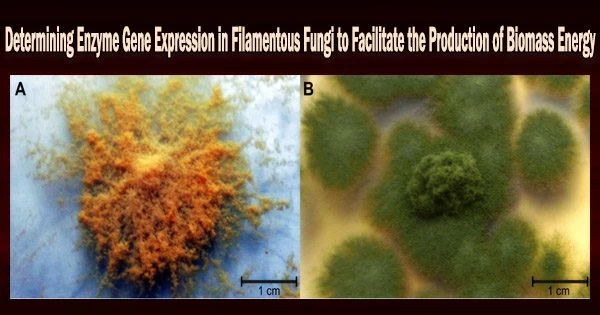Enzyme gene expression in filamentous fungi can be manipulated to increase the efficiency of biomass energy production. This can be achieved by identifying key genes involved in enzyme production, and then using genetic engineering techniques to enhance their expression.
In addition to being a longtime ally of sake brewers, filamentous fungi may soon become a supporter of environmentalists. Researchers from Osaka Metropolitan University have identified the processes that control the development of enzymes in a filamentous fungus, enabling the efficient breakdown of plant biomass as an alternative energy source to petroleum.
Filamentous fungi (molds) are microorganisms with a long history of use in the fermentation of sake, soy sauce, cheese, and many other products. Such fermentation is a good illustration of the industrial application of the large-scale enzyme secretion capacity of filamentous fungus.
Plant biomass is gaining popularity as a replacement for petroleum, which will eventually run out. Since the polysaccharides and aromatics that make up rigid plant cell walls make up a substantial amount of the enzymes needed to break them down.
As a result, research has been done to use filamentous fungi as a major supply of enzymes for the breakdown of plant biomass.
We constructed and screened a library containing approximately 9,000 gene-disrupted strains of Aspergillus aculeatus, and identified Uge5 as a novel regulatory factor that regulates the production of carbohydrate-hydrolyzing enzymes. The discovery of this new function took us by surprise. We plan to continue our research to elucidate phenomena that existing knowledge cannot explain.
Professor Shuji Tani
Delving into this field, a research team led by Associate Professor Shuji Tani, from the Graduate School of Agriculture at Osaka Metropolitan University, analyzed the regulatory mechanisms of carbohydrate-hydrolyzing enzyme production in the filamentous fungus Aspergillus aculeatus, which produces enzymes that have an excellent ability to degrade plant biomass.
Improved biomass conversion to energy can also result from improving culture conditions, such as nutrient availability and temperature, which can similarly have an impact on enzyme gene expression. As it has the potential to increase the effectiveness and sustainability of bioenergy generation, research in this field is both continuing and promising.
Uridine diphosphate (UDP)-glucose 4-epimerase (Uge5) is well known as an enzyme involved in galactose metabolism. However, the team discovered that Uge5 also regulates the expression of degrading enzyme genes in A. aculeatus. This is the first account of Uge5’s functions in modulating specific gene expression in filamentous fungus in response to various inducing sugars.
These results address the technological problem in developing a complete high production technique for diverse enzymes in filamentous fungi, which is highly desired.
Professor Tani explained, “We constructed and screened a library containing approximately 9,000 gene-disrupted strains of Aspergillus aculeatus, and identified Uge5 as a novel regulatory factor that regulates the production of carbohydrate-hydrolyzing enzymes. The discovery of this new function took us by surprise. We plan to continue our research to elucidate phenomena that existing knowledge cannot explain.”
















